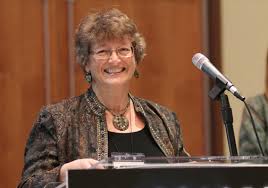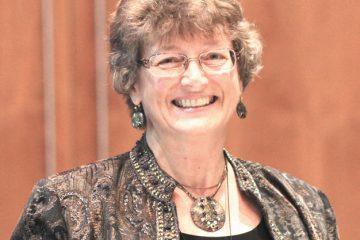Ritual matters

Jew in the Christian world
Jewish Family Education with Candace R. Kwiatek, The Dayton Jewish Observer
Following a two-year courtship, Conservative synagogues B’nai Tzedek and Ohav Shalom in Cincinnati recently joined together in a marriage ceremony, forming Congregation Etz Chaim.
Attended by hundreds dressed in tuxedos and gowns, it was a formal occasion featuring a rabbinic officiant, a congregant-made chupah (wedding canopy), Torah-circling ceremony, and values-focused ketubah (marriage contract).
Why all the hoopla for the merger of two congregations? Because rituals matter.
Sociology tells us that all rituals emanate from common sources: deity, sacred literature or leaders, religious or historical tradition, or human creativity, or some combination thereof.
Furthermore, ritual is found in every culture and society throughout history, where it serves human needs: communication with the divine, embodiment of history and storytelling, response to physical or emotional needs, evaluation of the self, reflection of religious and cultural values, and bonding within family or community. Rituals matter for expressing our humanness.
Science offers clues about the power of rituals. “Recently, a series of investigations by psychologists have revealed intriguing new results demonstrating that rituals can have a causal impact on people’s thoughts, feelings, and behaviors…What’s more, rituals appear to benefit even people who claim not to believe that rituals work,” write Harvard Business School behavioral scientists Francesca Gino and Michael Norton in the article Why Rituals Work in the May 14, 2013 issue of Scientific American.
In another study, reported at psychologicalscience.org on July 22, 2013, psychological scientist Kathleen Vohs at the University of Minnesota and her colleagues observed that “personal involvement in the ritual is paramount…the fact that rituals draw people into what they are doing — fully accounted for the positive effects that rituals have.”
Rituals matter for developing our awareness and attitude.
Judaism is well-known for its expression through ritual. While various branches of Christianity may observe a limited number of rituals, they are not ecumenical.
Christian worship may be on Saturday or Sunday. It may range from silence and personal reflection to a communion mass (a ceremony of bread and wine also called the Lord’s Supper) to a rock-style songfest with a sermon.
Observance of sacred days and seasons such as Christmas, Easter, and Lent varies, as do life-cycle events such as baptism and marriage. Fasting and tithing are not universal.
Within Christianity rituals abound, but individually they are neither embraced by nor familiar to the entire community of churches.
Judaism offers a significant contrast. The Dalai Lama tells the story of a visit to Israel where he asked one of the chief rabbis what element of doctrine unites Jews throughout the world.
The rabbi responded, “When it comes to doctrine, there is hardly any uniformity. What unites all faithful Jews are the rituals.”
Despite exceptional diversity within the Jewish world, rituals such as tzedakah, the mezuzah, Shabbat candles, challah, and the Seder are embraced by or are at least familiar to nearly all Jewish communities. Rituals matter for maintaining continuity and connection.
Although rituals abound in Jewish life, their rote performance — as many mistakenly believe — is not their purpose. Their purpose isn’t blind obedience or salvation or redemption.
Their purpose isn’t just to tell the Jewish story or to connect with the Divine. Their purpose isn’t simply community or cultural expression or continuity.
The genius of Jewish rituals is their capacity for teaching values and ethics, the central theme of the Torah echoed by the Prophets. Rituals matter most of all as a means to morality.
In the Mosaic Haggadah, David Silberman writes, “Tradition is designed to make us think, to look for bigger messages that apply to us today, not just to automatically rote go through a ritual.”
Through symbol and action, rituals are catalysts for the moral development of individuals and communities.
The impermanent man-made sukkah teaches humility, the blessing after eating teaches gratitude. Tzedakah teaches the obligation to pursue justice, the mezuzah teaches moral character both in and out of the home.
The Seder teaches the universal significance of liberty and the obligation to care for the needy and the stranger.
Rituals teach us how to be moral as we express ourselves, interact with others, and build community.
“Morality is God’s supreme demand of all human beings,” Rabbi Reuven Hammer asserts in The Torah Revolution. “Ritual is secondary to right conduct.”
If morality is the ultimate obligation, why add the intermediary of rituals? Can’t we just learn a catechism of Jewish values and moral precepts?
Leaving aside that many rituals are directly commanded by God, modern research suggests rituals are extremely effective in both life-changing and mundane situations via regular reinforcement, multi-sensory engagement, and emotional stimulation.
And Jewish rituals in particular also offer simultaneous multi-level learning opportunities, intergenerational participation, linkage to history and culture, and opportunities for fun and enjoyment. Rituals matter.
Literature to share
The Night that Unites Passover Haggadah by Aaron Goldscheider: Newly published to high acclaim, this Haggadah is a brilliant compilation of the stories and insights of Rabbis Kook, Soloveitchik, and Carlebach, combined with the traditional Seder text in English and Hebrew. Inspiring and informative, it explores traditions, values, history, Israel, and more, making it a must-have book to be savored all year.
Zvuvi’s Israel by Tami Lehman-Wilzig: Join a little fly (zvuv) and his cousin as they explore dozens of cities and sites around Israel. Open air markets, scuba diving, an alligator farm and spelunking are some of the unusual adventures included in this informative, engaging book. A delightful introduction to Israel for youngsters ages 5 to 10.
To read the complete May 2015 Dayton Jewish Observer, click here.



